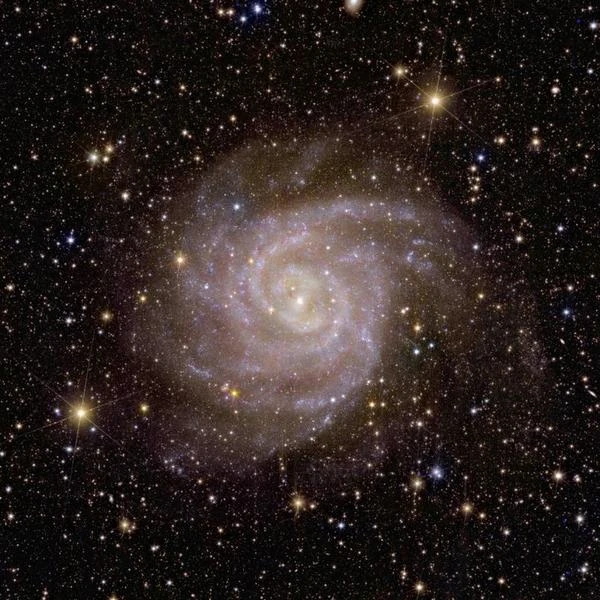
Image: The galaxy IC 342 or Caldwell 5 is nicknamed the “hidden galaxy” because, in the visible domain, it is partially hidden by dust from our galaxy, the Milky Way. However, Euclid allows it to be observed in the near infrared. The “hidden galaxy” is one of the four images that Euclid took during its first observation of the cosmos, 4 months after its launch.
Credit: ESA
The hidden galaxy IC 342 is a spiral galaxy located approximately 3.28 megaparsecs or 10.7 million light years from Earth, in the constellation Giraffe. Despite its size and actual brightness, its location behind dusty areas near the galactic equator makes it difficult to observe, earning it the nickname "The Hidden Galaxy." If the galaxy were not obscured, it would be visible to the naked eye.
However, thanks to ESA's Euclid space mission, which was launched in July 2023 and which observes the universe in the near infrared, we can see this galaxy in exceptional clarity.
The Euclid image shows that the galaxy IC 342 is an active galaxy, with many stars forming. It also contains a large number of nebulae, regions of gas and dust where stars form. We can also distinguish filaments and bubbles which testify to interactions between galaxies.
Although close, the hidden galaxy is not a member of the Local Group. IC 342 as well as NGC 1560, NGC 1569, UGCA 92 and UGCA 105 are galaxies of the IC 342/Maffei16 group, a neighboring group of the Local Group.
Euclid's image allowed astronomers to discover that the hidden galaxy contains about 100 billion stars, and is a significant source of ultraviolet radiation. It interacts with another neighboring galaxy, the galaxy NGC 1569. This galaxy is an irregular dwarf galaxy that is located approximately 1.5 million light years from the galaxy IC 342. It has a diameter of 2,000 light years, or about 10% of the diameter of the Milky Way. Its star formation rate is 100 times that of the Milky Way.
Astronomers believe that the galaxy NGC 1569 is being absorbed by the galaxy IC 342. This gravitational interaction between the two galaxies is responsible for active star formation in the galaxy IC 342.
Euclid is a space telescope that aims to study the influence of dark matter and energy on the expansion and structure of the universe. It measures the distances and movements of billions of galaxies that it observes over a wide swath of the sky. From javier 2024, he will create the largest 3D cosmic map ever made.